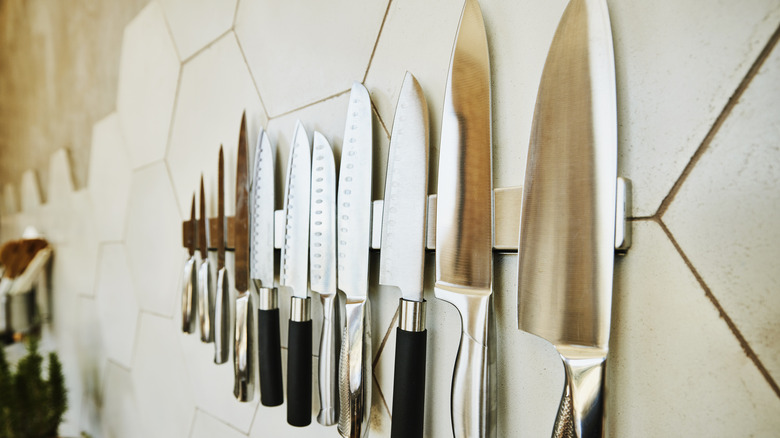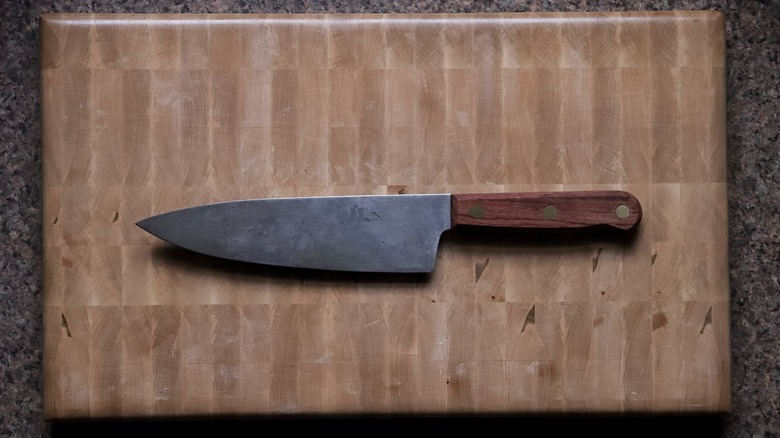The Old-School Kitchen Knives That Can Be Worth Hundreds Today
Vintage cookware is popular amongst people who love high-quality, unique design, and culinary history. The 1930s Art Deco Fiesta tableware, for instance, can command thousands of dollars per piece. Other vintage items like glass rolling pins, Pyrex casseroles, and carbon steel knives are also often sold for much more than they originally cost. In the case of vintage carbon steel knives, these prices can range from $50 to over $400. Yes, people are willing to part with hundreds of dollars to be in possession of one of these knives, even if their modern counterparts have similar price tags.
The price of a carbon steel knife will depend on several factors. One of the most important is whether the knife has been used or not. Vintage knives that are still unused are very rare, so they often command a premium, especially since some collectors specifically look for mint condition items. When comparing used vintage knives, the state of an item is also tightly tied to its price. A rusty knife won't be as valuable as one that's in good condition since it won't need intensive treatment. Granted, a rusty carbon steel knife could still command as much as $75, which isn't bad for something you might've found in your grandmother's attic. Unsurprisingly, larger knives with handles made from high-quality material are often the most valuable items.
What makes vintage carbon steel knives special?
Like any vintage item, part of the charm of these knives is that they're rare and have historic value. That said, carbon steel knives also have value beyond their nostalgia factor since they tend to stay sharp for longer than low-quality stainless steel knives. This can translate to them being more useful for cooking.
Another quality that makes carbon steel knives so unique is that they tell the story of each individual user. The steel's patina reacts to the different chemicals of the food with which it interacts. When properly cared for, the knife will end up with a patina that reflects the foods it has been used to cook with. This patina will be completely one-of-a-kind for each chef, making it a sort of visual memory of the meals you've enjoyed. For vintage carbon steel knives, this history becomes even more endearing as it represents the cooking habits of everyone who's used it, compounding decades of memories into the blade.
That said, carbon steel knives do require a bit more upkeep, especially when they've been around for a long time. Because they're prone to rust, you'll need to wipe and wash the knife as soon as you're done using it. As with all sharp knives, you should always skip the dishwasher. Vintage knives might also need to be sharpened before use. Thankfully, you won't have to worry about potentially hazardous cracks, as you would with other items like vintage cast iron pans.

